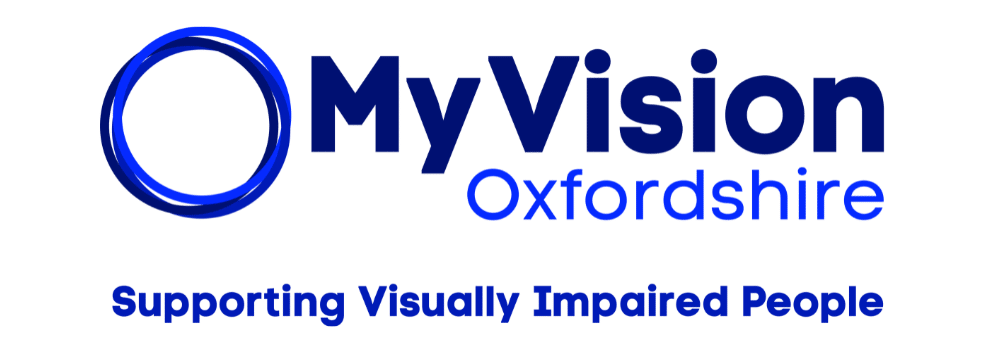Andy Smith is an active member of the MyVision community; you can often find him at one of our social groups or participating in a long-distance running event.
Andy has had Congenital Nystagmus and Astigmatism since birth. “I was born the way I am so it’s all I’ve ever known,” said Andy.
“When I was in school, I had to sit in the front of the class and have enlarged pieces of paper and things like that, so I was a bit self-conscious of that, but there wasn’t much I could do about it.”
“I always knew I wouldn’t be able to drive. I thought I had accepted it quite well until I was 17 and all my mates started doing driving lessons. Then I thought, ‘I’m missing out on something there.’ That was one of my earliest memories where my visual impairment did affect me.”
Now Andy finds his visual impairment mostly impacts things like going to events that his children participate in. “My eldest son is a rugby referee. I like to go and watch him do that but only being able to see halfway across the pitch is a bit frustrating … my youngest does taekwondo and it’s quite nice to go and watch him. When he does events, if we’re lucky he’s near the side, but if he’s near the middle, then it’s a bit difficult.”
“But it doesn’t stop me,” said Andy. “It doesn’t stop me from going to watch sports and taking in the environment.”
“I try not to let it affect me; I think I’m lucky in some ways because I have some vision, and it’s what I’ve always known. I think to myself, ‘that’s the card you’ve been dealt, and you’ve had it all your life.'”
Andy’s involvement with MyVision started when he was about ten years old. His parents contacted the organisation to get Andy support in school. His teachers were made aware of the kind of support he needed in order to succeed; he was provided with large font papers, as well as visual aids.
In his twenties and thirties Andy felt that he no longer needed much support, so he no longer accessed our resources, but still kept in touch. Then about five years ago he was having some issues at work with the use of a computer. He got in in touch with Nathan, our Client Advice Officer who “showed [him] a few things which really helped.”
When COVID restrictions were lifted, Andy was asked to join our Banbury Social Group. “I was a little worried, what if I’m the only one there who is under sixty” he said. “But it didn’t matter.” Andy was for a while the youngest person in the group, but he still made some great friends and built meaningful connections.
Andy recently started using a cane for the first time.
He had a few incidents of falls and stumbles on what he thought were flat surfaces. “I thought, something’s not right here. I’ve lost a bit of depth perception,” he said.
The Visual Impairment Team recommended a cane for Andy, which he was initially hesitant about. “There’s a bit of a stigma,” he said. To which the VI Team replied, “the only stigma is your own problem with it.”
Andy said that when he started using a cane, “it actually made such a difference, to the way I walk. I stand straight up, whereas before I’d be hunching over and looking down at the floor. It gave me confidence to walk on my own more and to walk faster. It’s actually amazing.”
Andy is also an avid runner. He most recently ran for us in the Oxford Half Marathon. He said, “I started running a few years ago to get fit. I did a parkrun which I enjoyed. Then I thought, ‘well I’ve done a 5k run, now I want to do a bit more,’ but COVID got in the way when I was going do a half marathon.”
Since then, Andy has taken part in parkruns, the Oxford Half, and the Manchester Marathon.

MyVision’s effect “has always been a positive one,” said Andy. “Now I see it as an extended family in some ways. We go along to meets and have a coffee and a chat and we do other things together. It’s given me the confidence to admit to more people that I do have an issue with my eyesight and to say, ‘this is who I am, and I might need a little bit more help than might appear at times.’”
“MyVision is incredibly supportive. You might not consider yourself to need it all the time, but it’s there when you do.”




